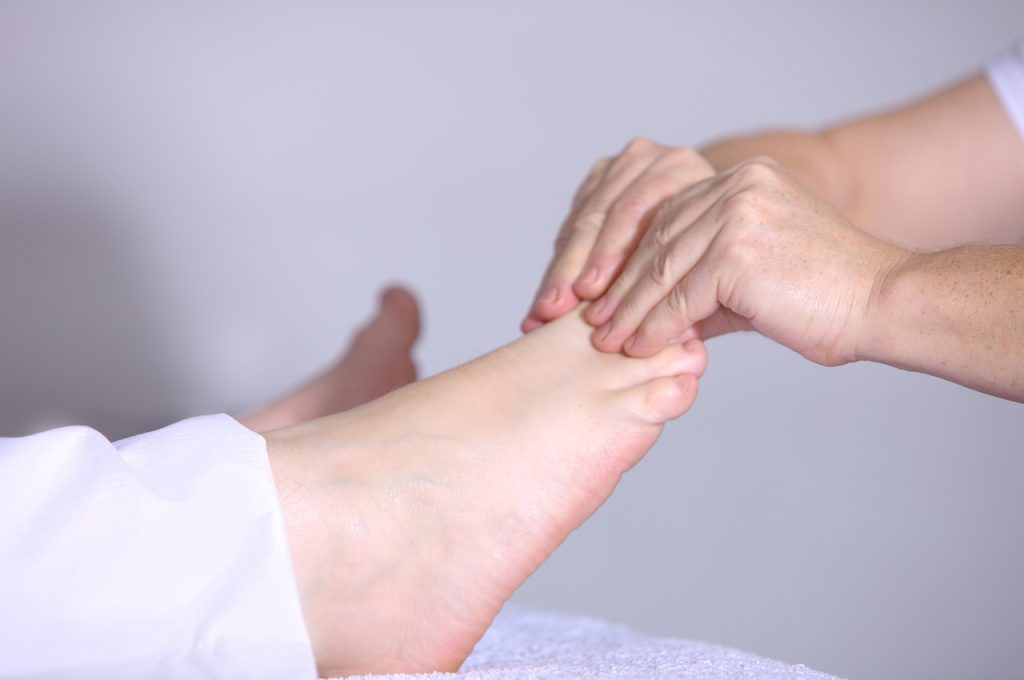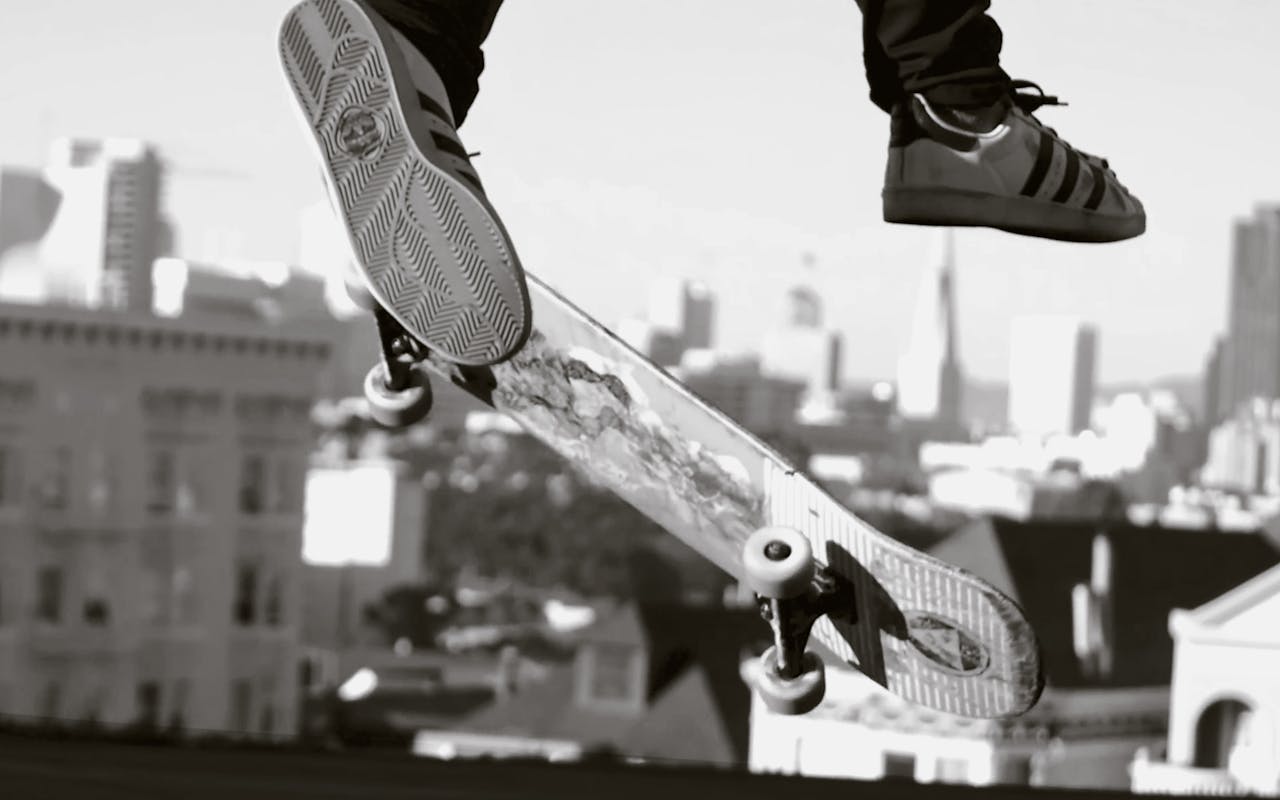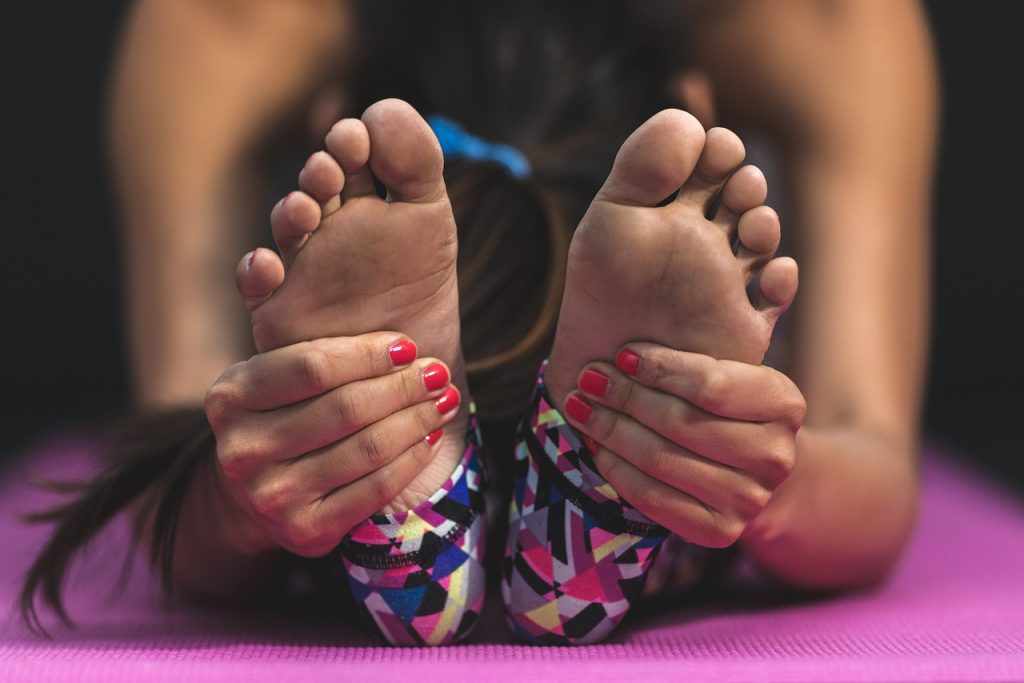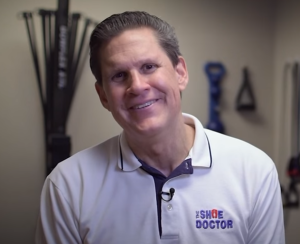3D foot scanning provides you with a quicker, less messy alternative to plaster casting to get your foot measurements. 3D scanning means you can have digital foot images in minutes, bypass the plaster-dry period, and boot-shoe and foot filth. 3D scans allow you to save, send, or print your foot information, which can be valuable for custom shoe or medical purposes. Plaster casting still provides you with intense, tactile molds, but the process is more time-consuming, and it can break or crack. If you want easy foot measuring and additional uses for your data, 3D scanning is great. The following sections demonstrate how each process suits various requirements, allowing you to choose what is best for you.
Key Takeaways
- Yes, you can take advantage of the increased accuracy and detail of 3D foot scanning over plaster casting.
- 3D foot scanning improves your comfort during the assessment process by offering a quick, non-invasive, and mess-free alternative to plaster.
- Its digital workflow enables quicker orthotic production and simpler modifications, so you can get your custom orthotics sooner.
- Digital scans generate less waste and are more environmentally sustainable than plaster casting, encouraging sustainable healthcare.
- Consistent, repeatable data from 3D scans allows your practitioner to follow shifts and track your progress.
- Look for continued improvements in 3D scanning and orthotic materials to keep your care on the cutting edge.

Understanding Plaster Casting
Plaster casting is the original method of mapping the shape of your foot and ankle by encasing them in wet plaster bandages. This technique has its origins in orthotics, particularly in the orthotic lab, where clinics have employed it for decades to produce bespoke foot orthoses. The key ingredient, Plaster of Paris, sets soon and creates a rigid shell that records the foot’s contours. Although plaster is inexpensive and sets in minutes, the advent of 3D scanning technologies is transforming how we create custom orthotic devices.
The Process
- A clinician carefully wraps your foot and ankle with wet plaster bandages, assuring the material surrounds the desired area with no holes.
- They cocoon your foot in just the right position, whether non-weight-bearing (lying or sitting) or weight-bearing, depending on the clinical objective.
- The plaster sets typically in 5 to 10 minutes, but drying can take hours before a cast is ready to move forward.
- When dry, the hard cast is carefully sliced away, providing a negative mold of your foot.
- Clinical landmarks such as bony points and arch shape are noted on the cast to assist with measurements and create a well-fitting orthotic.
Right foot placement is paramount for creating custom foot orthoses. If your foot isn’t positioned just right, the resulting orthotic device could fit poorly, causing discomfort or inefficiency. Waiting for the plaster to dry can bog the entire process, extending your visit by hours or even days. Those clinical landmarks marked on the cast direct the orthotics lab technicians when constructing the final orthotic, as any errors here can translate into a suboptimal fit.
The Drawbacks
A lot of folks hate plaster casting. It’s messy and can feel cold or clammy. If you have sensitive skin or limited mobility, holding still for a few minutes may be difficult.
Additionally, there are eco-concerns associated with plaster casting. Used plaster and bandages contribute to clinical waste, which can be difficult to recycle, adding to the ecological expense, especially in busy clinics. In contrast, 3D scanning technologies provide a more efficient alternative.
Plaster casting is not instant; traditional methods can take 11 to 16 minutes or more per foot, while a digital scan can be completed in just minutes. The need for skilled personnel and specialized materials drives up costs, making the advantages of modern methods clear.
Where fancy 3D scanners aren’t available, plaster casting remains the norm, and its disadvantages are obvious. Embracing advancements in foot imaging can significantly enhance the accuracy of orthotic prescriptions and improve patient comfort.
Exploring 3D Foot Scanning
3D foot scanning employs advanced imaging technology to capture the contours of your foot in three-dimensional detail. Orthotic labs now rely on this digital scan technique, moving away from manual plaster casting. Clinics utilize a variety of foot scanners, from handheld devices that allow for freedom of movement to stationary models that deliver rapid, steady scans. These machines enhance the precision of the measurement, capturing more data in less time. With the rise of 3D scanning technologies, 3D foot scanning is gaining momentum globally as more podiatrists and orthotic makers transition to digital workflows.
The Technology
Laser scanners and structured light scanners are the pioneers in foot imaging. Both project lines or patterns onto your foot and interpret how those lines warp to construct a 3D map, capturing the curves, bumps, and arches in real-time, even detecting slight variations that plaster could overlook. Labs then combine these 3D scans with CAD (computer-aided design) software, allowing either you or your supplier to customize the model before the fabrication of an orthotic device. Industry-standard procedures, such as those used by Eva and the SSII, direct how scans are captured and assist in maintaining consistency between patients. Discrepancies between scans and casts were noted, particularly for measurements such as rearfoot width and arch height. Overall, the average percent difference for the majority of their major metrics averages at or below 5%, which is considered a good match.
The Advantages
- Speed: 3D scanning takes between 2 and 11 minutes, compared to 11 to 16 minutes for plaster casting.
- Digital data can be stored, shared, and reused for future tweaks.
- More accurate models of both the foot and device enable improved fit.
- Less mess and no drying time reduce waiting time.
- Reduced material waste compared to single-use plaster.
- Easy integration with CAD/CAM systems for design and manufacturing.
- More customization options align with a wider range of foot profiles.
- Clearer records for tracking patient changes over time.
Digital scanning accelerates the entire procedure. The scan is performed while you’re standing or sitting, and outputs are generated immediately. This translates to shorter clinic visits and quicker device delivery. Orthotic data from your scan can be used to create numerous designs, not just a one-off. You aid in reducing waste, as there’s no excess plaster to dispose of.
The tech does have a learning curve. Other labs or even clinics might take years to hone scanning and CAD work. The more experience providers receive, the greater the advantages accumulate. Recent research finds excellent concordance between scans and casts for the majority of foot and leg measurements. This can vary based on what exactly is being measured.
Why 3D Foot Scanning Is Better
Discover why 3D scanning technologies for foot imaging are the superior option. It differentiates from plaster casting by providing a more efficient, accurate, and patient-friendly process.
1. Unmatched Precision
3D scanning technologies capture the full shape and alignment of your foot with unprecedented accuracy. The digital scanners pick up even small fluctuations and subtle deformities that plaster casting can miss. This precision allows you to obtain a more accurate fit for custom foot orthoses, with mean percentage differences within allowable limits, typically less than 5 percent. With digital scans, each measurement remains consistent, so your readings do not vary from visit to visit. This reliability helps your care team monitor specifics and make smarter decisions for your health.
2. Patient Comfort
For one, 3D scanning technologies are non-invasive. There is no sticky or cold plaster on your skin. The digital scan is clean and typically requires only a few seconds per foot. For anyone who has a difficult time standing for extended periods or is still struggling with mobility, this rapid scan can make all the difference. Many patients are reassured that their care is employing new, innovative tools that do not increase anxiety or pain during their appointment.
3. Process Speed
You save time with a 3D scan, which can take under a minute, while plaster casting can take much longer. This efficient 3D scanning process allows for immediate digital images, enabling your orthotic prescription to be created faster and with less waiting. This advancement benefits both you and your healthcare team, allowing more patients to be seen and treated daily.
4. Digital Workflow
Digital files from 3D scans travel quickly from the clinic to the orthotic lab. These 3D models work well with digital fabrication, making it straightforward to modify custom orthotic designs without needing to start over. Cloud storage allows your information to be securely shared among your care providers and labs, wherever they may be. This streamlined process reduces confusion and enhances collaboration to ensure your orthotic prescription is correct on the initial attempt.
5. Data Repeatability
Each digital scan remains on record, allowing your care team to return, review your progress, and compare measurements as time passes. This repeatability is important for managing your care and tracking the effectiveness of your treatments, especially when utilizing custom orthotic prescriptions for optimal outcomes.

The Practitioner’s Perspective
Changing from plaster casting to 3D scanning technologies for foot imaging transforms how you make decisions, work with new tools like digital scanners, and control costs in your orthotics department. Every decision impacts how you assist patients and how your practice operates daily.
Clinical Decisions
The practitioner’s perspective: Accurate 3D scanning technologies enable you to write better orthotic prescriptions. They capture minor nuances of foot shape and pressure, which allows you to identify issues you might overlook with plaster casting. Other practitioners achieve plaster casting comparable results every time, at least for standard measurements such as foot length and forefoot width.
You receive a significant amount of additional information from these scans, such as angles and volume, not just length and width. This detail is useful for foot patients with complicated requirements or uncommon foot contours, especially when creating custom orthotic solutions. With greater nuance, you can adjust orthoses to fit more comfortably or distribute weight in a particular fashion.
Here, treatment becomes more intimate. If patients have an idiosyncratic gait or pain in a specific location, you can modify the digital scan immediately. Many clinics discover that patients are delighted since they receive a more customized fit and require less follow-up.
Scans accelerate things. Most scanning sessions are 2 to 11 minutes, casting from 11 to 16. That means less time for you and less wait time for your patients.
Skill Transition
It’s not immediate learning to operate 3D scanners. It can take as long as four years to get really good with a CAD/CAM system. Scanning or software errors can cause misfits, so training is important.
You need to attend some courses or workshops to begin. They instruct you on how to hold the scanner, operate the software, and tweak your workflow. Continuous training is crucial because new updates or devices are released at lightning speed.
Still, your magic hands and foot reading skills don’t disappear. You employ them with the scanner to verify that the computer agrees with your eye and touch.
Cost Analysis
Factor | 3D Scanning | Plaster Casting |
Initial Cost | High (scanner purchase) | Low (supplies) |
Ongoing Cost | Low (software, updates) | Medium (supplies, labor) |
Long-term Savings | High | Low |
Production Speed | Faster | Slower |
Digital scans reduce the material expenses of plaster, bandages, and shipping. Clinics that switch tend to reap savings in the long run, even if the scanner is more expensive initially.
Making orthotics is speedier, so you can see more patients a day. This translates into more revenue per hour and a faster clinic turnaround.
Patients like the quicker in-and-out experience, which generates more business. Happy patients return and refer, so your investment has a long tail payoff.
Beyond Static Measurements
Foot assessment is no longer limited to snapshots in time. 3D scanning technology, particularly through digital scanners, lets you see how your foot moves and changes shape, not just how it looks when you stand still. This shift opens the door to better understanding foot function, more precise custom orthotic devices, and care built around your actual needs, not just a single pose.
Dynamic Analysis
3D foot scanning technologies introduce movement, allowing you to capture subtle changes in foot shape during ambulation or sprinting. Not only does it measure the foot at rest, but you can also observe how it flexes, twists, and bears weight throughout your day or sport. This is crucial since studies reveal that foot morphology and measurements vary significantly between standing and dynamic movement, sometimes by more than 20%, particularly in regions such as rearfoot width and arch height.
By capturing real-time data through a digital scan, your custom orthotic can fit how your foot actually functions, not just how it appears in a static cast. It assists in identifying problems such as overpronation or uneven pressure points that are frequently overlooked in static measurements. For you, that translates to the opportunity to identify biomechanical issues early, before they develop into discomfort or injury.
Dynamic measurements allow practitioners in the orthotics department to provide you with treatment plans that align with how you live and move. This simplifies orthotic adjustments over time, as subsequent 3D scans can monitor changes and inform modifications for optimal outcomes.
Material Science
With 3D printing, you receive orthotics that are light but hefty in strength. The materials now used for these custom foot devices have come a long way. They can flex where you need, hold shape where you don’t, and outlast old-school plaster models.
Material choices are important. If you’re an athlete, maybe you require additional shock protection. For example, if you stand all day, you may desire additional durability. 3D printing allows you to customize these characteristics, ensuring the device fits your requirements, not just some generic specification.
Predictive Outcomes
3D scanning technologies provide you with a greater opportunity to anticipate the effectiveness of your orthotic device intervention. Armed with rigorous digital scans, analysis can detect trends and recommend specific orthoses before issues escalate. Early scans catch issues, and continuous monitoring means your custom orthotic can be adjusted as your foot morphology and activity evolve.
The Future of Orthotics
Orthotics is entering a new era where the digital wave is determining how you receive care and what your choices look like. The transition from plaster casts to 3D scanning technologies for foot imaging is not just a change in techniques; it reflects a broader trend in the industry toward more intelligent, efficient, and personalized patient care globally. This shift to using a 3D scanner for capturing foot morphology is revolutionizing the process.
Trend / Advancement | Description | Example |
AI-driven analysis | Use of AI to read 3D scans and spot complex patterns | AI can spot subtle gait changes |
3D printing advances | Custom orthotics, fast turnarounds, complex shapes | Carbon fiber springs for flexible support |
Smart materials | Orthotics with sensors and adaptable components | Wearables that track walking in real time |
Telehealth integration | Remote foot scanning and fitting | Digital consults for rural users |
Open-source designs | Shared templates for affordable, accessible orthotics | Clinics using global design libraries |
AI is going to have a much bigger role in how you’re fitted for orthotics. By utilizing 3D scanning protocols, AI analyzes your digital scan and identifies nuances in your foot shape and motion. This means your orthotic prescription can be tailored specifically to you, rather than relying on a standardized mold. For instance, AI could detect early indications of pressure points or an unequal gait, allowing your care team to adjust your orthotic before you experience discomfort. It’s this sort of insight that plaster alone can’t capture, making 3D scanning a compelling alternative for those seeking a little extra from their devices.
Telehealth is breaking down barriers to getting more folks into 3D foot scans. Imagine being able to scan your feet using a smartphone or a small foot scanner at a remote location and then have a specialist examine the results over the web. It’s particularly handy if you live somewhere without easy access to clinics or just need a quick refresh of your device. Remote fitting and check-ins reduce travel and wait times, enhancing accessibility for many.
How orthotics are made is evolving due to emerging technologies. Three-dimensional printing allows you to receive a device custom to you, constructed with advanced materials such as carbon fiber or even embedded sensors. These sensors monitor how you walk and communicate back to your care team. Other labs are developing open-source orthotic templates, so clinics everywhere can print and fit personalized devices for less. You will probably notice more options and more focus on injury prevention, not just support.
Conclusion
To check up on your foot, 3D foot scanning provides you with transparent, immediate, and precise findings. You have a scan in seconds, and the fit feels custom-crafted. No wet plaster on your skin or cleanup. Worldwide clinics now choose 3D scans to make you walk stronger and ache less. You experience actual, observable differences in the fit of your shoes and the way you walk. More tech, more comfort, less guesswork. You can rely on these scans to provide actual measurements, not a blob of goo. If you want the most advanced and accurate treatment for your feet, it’s time to give 3D foot scanning a whirl. See if your local clinic provides it now.
Frequently Asked Questions
What is 3D foot scanning?
3D foot scanning is a digital process that records the precise form and dimensions of your feet, utilizing advanced 3D scanning protocols to create a digital scan for custom orthotic devices or bespoke footwear.
How does plaster casting compare to 3D foot scanning?
Plaster casting is a manual technique that captures a mold of your foot, but modern methods like 3D scanning protocols offer quicker, cleaner, and more accurate measurements for better results.
Is 3D foot scanning more accurate than plaster casting?
3D foot scanning protocols are typically more accurate than plaster casting, as they record every nuance of your foot, resulting in better-fitting and more comfortable custom orthotic devices.
Does 3D scanning take less time than plaster casting?
Yes, 3D scanning technologies are significantly faster, typically adding only minutes to the process, whereas plaster casting can take much longer due to drying and cleanup.
Is 3D foot scanning safe and comfortable?
Definitely. 3D foot scanning, a key process in custom orthotic prescriptions, is non-invasive and painless. You just stand or position your foot on a digital scanner, making it comfortable and suitable for all ages.
Can 3D foot scanning help with custom orthotics?
Yes. Your 3D foot scan utilizes advanced 3D scanning technologies to capture incredibly precise data for crafting personalized custom orthotic devices, enhancing your comfort and support based on your specific foot parameters.
Are there any disadvantages to 3D foot scanning?
3D foot scanning, utilizing advanced digital scanners, requires special equipment not universally available, but the improvements in precision and efficiency for custom orthotic prescriptions typically outweigh this downside.
Struggling With Foot, Back, or Knee Pain? Find Answers With 3D Foot Mapping at The Shoe Doctor.
If you deal with constant back or knee pain, your feet could be the real source of the problem. Even small misalignments in your foot structure can throw off your entire body’s balance, putting strain on your joints and muscles. At The Shoe Doctor, we use advanced 3D foot mapping to pinpoint these imbalances with incredible precision.
Our detailed foot-mapping process captures how you stand, move, and distribute pressure, allowing us to create truly custom orthotics that correct alignment, relieve pressure points, and restore natural movement. With more than 20 years of experience, Russell combines cutting-edge technology with expert craftsmanship to design orthotics that do more than add comfort—they help prevent pain from returning.
Through our partnership with the Spine & Injury Medical Center in San Jose, we take a full-body approach to relief, ensuring your posture, gait, and foot mechanics all work together for lasting results.
If you’re in the South Bay Area, book your free consultation today. Let The Shoe Doctor use 3D foot mapping to help you move comfortably and confidently again.
Disclaimer
The materials available on this website are for informational and entertainment purposes only and are not intended to provide medical advice. You should contact your doctor for advice concerning any particular issue or problem. You should not act or refrain from acting based on any content included in this site without seeking medical or other professional advice. The information presented on this website may not reflect the most current medical developments. No action should be taken in reliance on the information contained on this website, and we disclaim all liability for actions taken or not taken based on any or all of the contents of this site to the fullest extent permitted by law.


